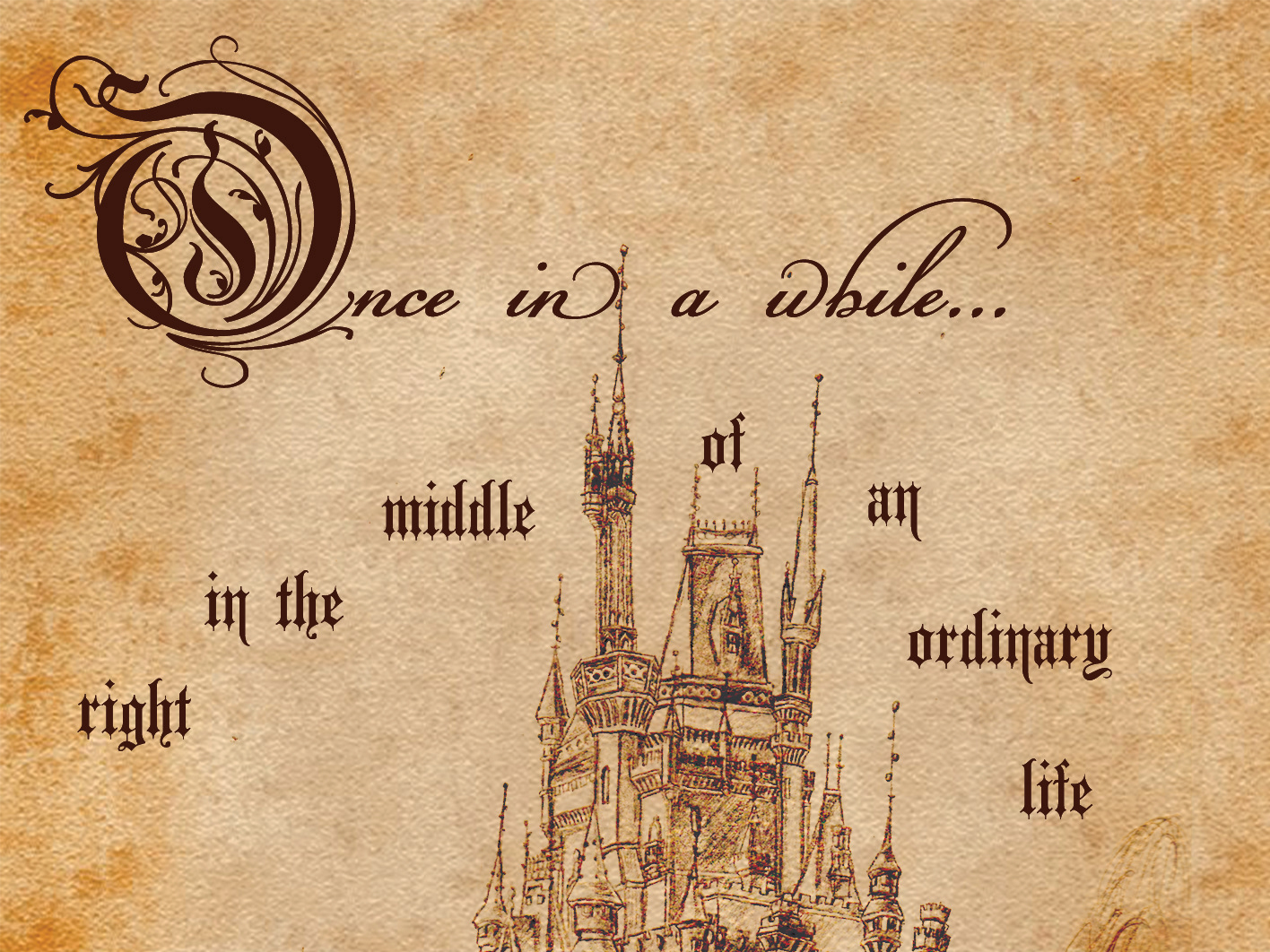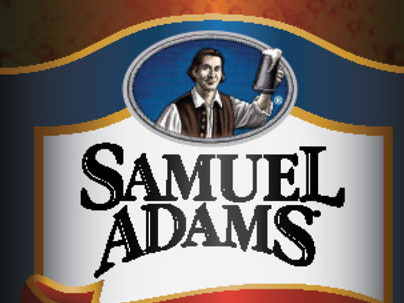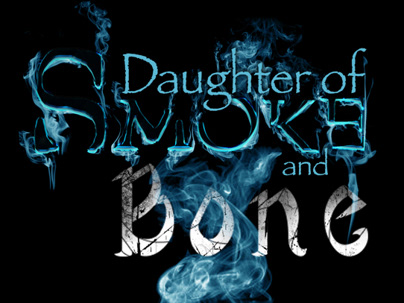For this label I looked at a lot of Victorian era advertising for inspiration. I drew the logo typeface myself based on several historical sources. Laudanum was a pain medication and cough suppressant that became popular in the 18th century derived from opium. It was considered miraculous in its time and used widely without any real understanding of its addictive nature. Laudanum addiction was fairly common across all classes due to how cheap it was, and being available over the counter. It was used for practically anything because it was one of the more effective medications of a time period where cholera, tuberculosis, yellow fever and more were rampant. Women would drink it mixed in their tea, and it was even used to soothe babies.
Strychnine was never technically marketed as a stimulant like this bottle indicates; it has historically been sold strictly as a poison for rodents. Despite that, in the late 19th to early 20th century, it still became popular as a stimulant and performance enhancer, sort of like coffee is today. HG Wells mentioned it in passing in The Invisible Man ("Strychnine is a grand tonic to take the flabbiness out of a man" a character states. Someone immediately refutes that "It's the devil, it's the paleolithic in a bottle”) But I figured due to the very lax advertising rules of a time period where you can bottle anything and call it a 'patent medicine', the company could easily pass that off as an endorsement! Strychnine is colorless and causes very dramatic symptoms quickly after ingestion, such as muscle spasms and frantic eye movements, so it is often featured as a poison in murder mysteries. Again, I really spent a lot of time studying Victorian era advertising to recreate that style of design for these labels. They were quite elaborate and used a ton of different fonts, flourishes to accent words, and complex illustrations. Essentially the exact opposite of graphic design today! It was fun to work in a different set of aesthetic rules though, I could kind of just go crazy with the design. Everything on the label is accurate as far as health information and preparation goes.
Arsphenamine was an arsenic-based medication first introduced around 1910 as a treatment for syphilis. It was a highly toxic, crystalized substance that had to be dissolved in sterilized water for injection at the patient's bedside. Due to the fact that its crystalline structure was notoriously unstable in air and required minimal contact with it, this often led to side effects just caused by administration alone. Improper handling could lead to rashes, liver damage, and death. The label doesn't specify what the medicine actually treats as a nod to the *delicate sensibilities* of the era, and borrows its list of uses from Fowler's Solution, a milder arsenic-based medicine used for things like malaria and fever. I made a hypothetical bottling company and pharmacist for the witch to sell her more modern potions under for the Victorian Era bottles, so that I was able to get the look of blatant advertising that was so common in that era.
Pirate-inspired label based on old map illustrations. The mermaid was drawn in Photoshop.
The label for Mercury is based on Enlightenment era pamphlet designs and uses Baskerville font, one of the newly invented typefaces of the time. The Enlightenment is when alchemy was at its peak and also when it was beginning to be discredited by more legitimate scientific processes.
Bottled soul, perhaps useful in the witch’s immortality spells. This is themed around late Enlightenment-era lab/medical equipment label.
Hmm, looks like the witch who owns this potion collection has broken into a government lab to steal some potion ingredients. Star jelly is a mysterious, gelatinous substance found on the ground or sometimes dripping from trees and other structures after a meteor shower. Also called star-falling, star slime, astral jelly, star snot, stella terrae, star slutch, or moon’s excrement. It’s been reported for centuries with no definitive explanation, from the 1200’s to as recently as 2013. This odd phenomenon inspired the movies The Blob and Invasion of the Body Snatchers. Some theories for the slime are: frog oviducts regurgitated by birds, Cyanobacteria colonies swelling after rain, or slime molds. This bottle is based on a reported case in North Reading, MA. that actually occurred in the 80’s, but I wanted to use a different date and take advantage of a late 50's aesthetic. Testing results on the samples from North Reading returned as 'inconclusive but non-toxic’.


I really wanted to make one of the bottles a love spell, but I also wanted it to convey how sinister the idea of compelling someone to love you via potion really is. I liked the name "True Love’s Mockery" because it works in two senses: it mocks and cheapens the concept of true love by forcing a faux version on anyone dosed with the potion, and also a mockery is another word for a lesser imitation anyway. I went with a fairytale theme on this bottle to play off the “true love’s kiss” motif. It looks like cut crystal and has pointy gems scattered around, and it’s not aged like some of the others. The fonts are storybook blackletter and cursive, with illuminated manuscript style capitals and illustrations of Cupids and hearts.

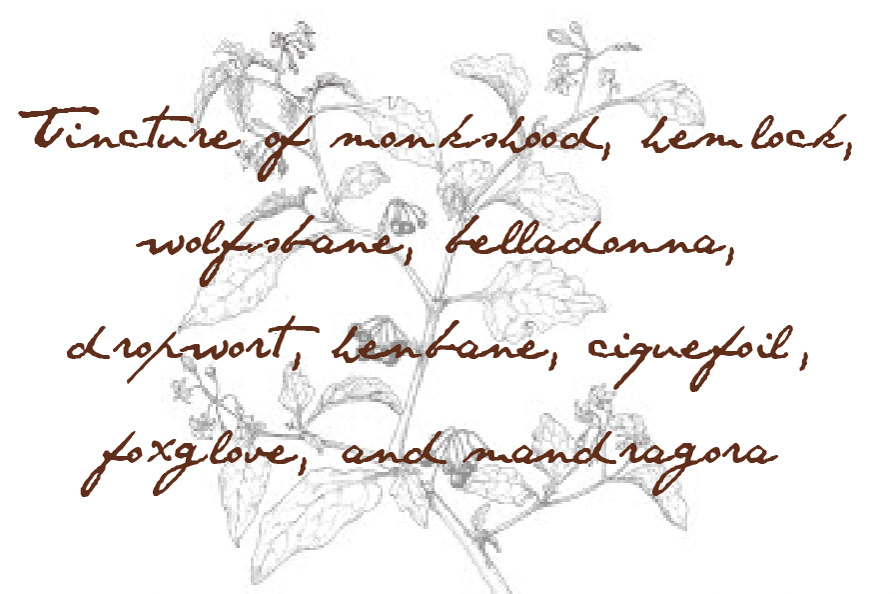
A literal component of early European witchcraft; historical recipes for flying ointment have been described for centuries though the actual specifics are lost to time. Part of the legend of witches flying on brooms came from this potion. Actually, the 'flying' was purely in the mental sense. The combination of herbs, toxic if ingested, were not deadly when absorbed through the skin. They created psychotropic effects that magic practitioners believed were their souls taking flight or transforming into animal 'familiars'. The herbs were dissolved into fat which was sometimes alleged to be of an unbaptized baby during the witch trials but was most likely animal. The whole 'witch riding a broom' thing was a result of the idea that a witch would hop around on the besom broom while hallucinating flying on it, teaching the crops to grow. It eventually turned into the accusation that witches would fly to a Sabbath gathering and hang out with the devil. Random fact I learned doing this research: calling a witch's gathering a Sabbath, derived from the Jewish term Shabbat, was deliberate antisemitism of the time, demonizing Jewish people along with the supposed witches. Most of the accusations against witches were also, at one time or another, leveled at nearly all groups out of favor of the Catholic or Protestant churches, including branched-off Christian sects, Jewish people, Muslims, and lepers. Most of the suspected "evil" of the flying ointment is written off as nonsense in modern times, but it's also been studied from the angle that the witch's ointment was a shamanic tool to induce an altered state of consciousness as part of a pre-Cristian belief system.
Going back to the Flying Ointment from my last post, here's a potential ingredient. (It’s also what the Sanderson Sisters used to make the Black Flame Candle!) Grossly enough by modern standards, human fat was considered a pharmaceutical ingredient in 16th century Europe, up until the 19th century. It was typically gathered from executed criminals. It was also an alleged ingredient in witch potions. In continuing the theme of the overall injustice of the witch trials that infused the Puritan-era bottles, the man sentenced to death was not a violent criminal but an imprisoned debtor (debtors' prisons are a whole other European historical mess; however, I couldn't find any info that prisoners were actually executed. A bit of poetic license there) The date on the label is the year of publication of the Malleus Maleficarum (Hammer of the Witches) the book that basically kicked off the witch hunt craze in Western Europe and bled over into colonial America. It was a witch hunting manual that legitimized the idea that witches even existed, that they worked with the devil, and were out to harm people. A suspected witch was a heretic and recommended to be tortured for confession and burned at the stake. Prior to that, it was actually considered heretical and unenlightened to even believe witchcraft existed. The idea of a witch began to be associated with females who were well-educated and overstepped the societal bounds of a 'proper' woman. Many were lower class and elderly. They were cast as evil and sinful by nature and thus more susceptible to the devil. Side note, the author was originally laughed out of town by church officials when he tried to prosecute a woman for witchcraft. He was accused of fanaticism and being obsessed with the woman he accused. However, eventually he won support from the pope and caused a centuries-long moral panic; that a secret network of witches were causing plagues, undermining the church, and generally causing mayhem. Between 40,000 and 60,000 victims were executed.
This bottle contains blood from a very long-lived Romanian vampire. He was first turned in the era of Kievan Rus’, a civilization that no longer even existed by the date of collection. History-wise, the most well known form of the vampire legend is Slavic in origin, popularized in the West by novels such as Dracula. In keeping with that legacy, the label is based on Eastern European-looking writing and folk art accents. However, different versions of the vampire myth have existed in almost all cultures for millennia. Spooky to think that something inspired almost all cultures of the world to imagine the same thing, hmm? Or was it imagination....?
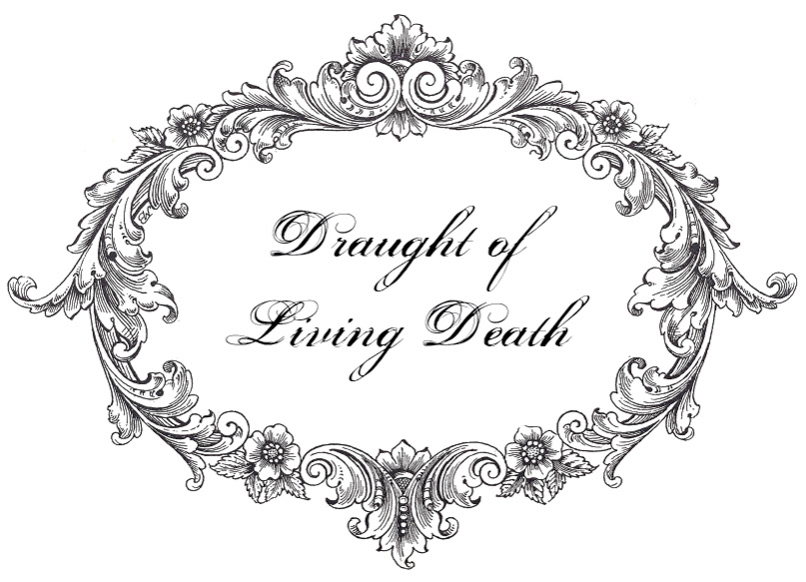

The recipe for this sleeping potion was not based on anything historical or mythological; I did some research into poisonous plants for inspiration and while quite a few didn't make it into any other potions, they still had dark, haunting, or romantic names that I really liked. This is something of a collection of what was left over in my notes. Interesting side note: one theory about the Salem Witch Trials is that the supposedly ‘bewitched’ people were really suffering from ergot poisoning from contaminated wheat and hallucinating their alleged curses. It’s mostly debunked, but I thought it was interesting, so that’s why I included it as an ingredient.


